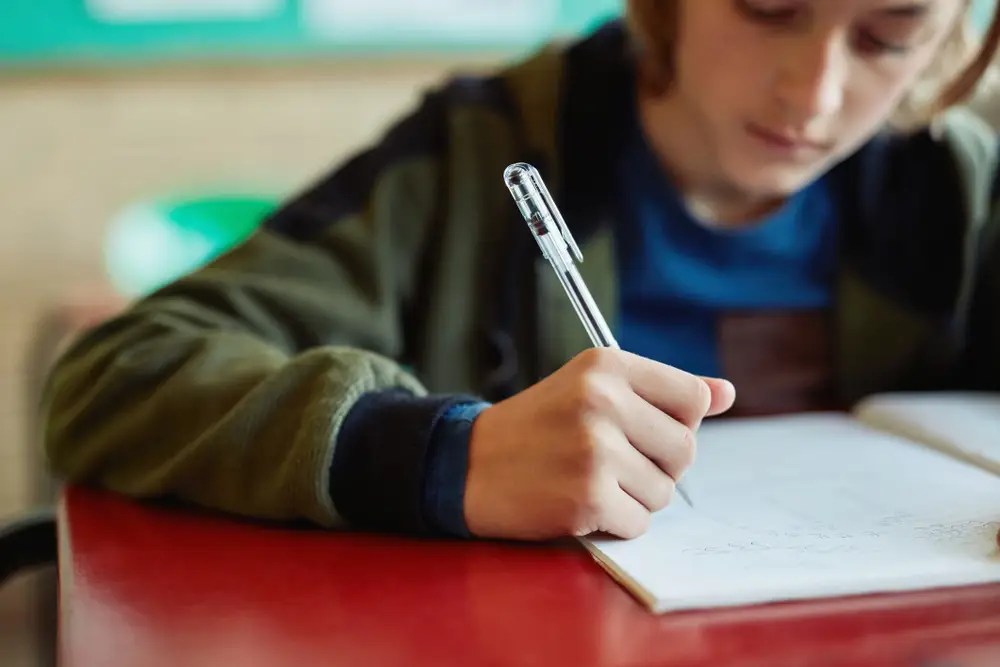I’m a child psychologist, and I asked my son’s teachers to limit his use of technology at school. Here’s what happened.

Scott Kollins (not pictured) asked his son’s teachers to limit use of technology for his son.
By the time my son was in seventh grade, he was struggling with an addiction to technology. As a psychologist, I had questioned in the past whether phones and computers could truly be addictive. But when I saw my son experiencing withdrawal symptoms and lying to get more screen time, I realized they could be — and it was happening right in my house.
Once I realized my son had a serious challenge, my wife and I made a plan to limit his use of technology, which included locking up all devices in the house at night. But we faced another challenge: school.
At my son’s school, like most these days, all students had laptops. There are a lot of benefits to using technology in the classroom, but for some kids, like my son, having a computer isn’t an advantage.
We started with an open conversation with the school
I knew I wanted my son to have less access to technology at school. But I also realized that by removing the thing that was challenging (the computer), I was creating a whole set of new challenges. Since I’m not in the classroom, I probably didn’t even know what some of those unintended consequences were.
My wife and I didn’t know what the right answer was and didn’t claim to, so we asked for a meeting with the school. My son has autism and ADHD, so he has an individualized education program (IEP). That gave us a big advantage because the school had to listen to our concerns. Plus, we already had an established means of communicating with them and trust with my son’s educational team.
We realized we needed a fluid approach
At home, we could simply lock up computers and phones when our son had reached his screen time limit. For school, we knew it wouldn’t necessarily be as simple.
Instead, we came to his teachers with a statement: We want to limit his access to his computer as much as possible while still supporting his learning. We asked what sorts of other systems we could implement within that framework. The details varied from class to class.
We went back to paper and pencil
Whenever possible, my son did his assignments with paper and pencil. For math problems or essay writing, this was fine. Yet we soon found there were assignments he simply couldn’t do without a computer — like watching a given video and writing a response.
In those situations, my son got access to his computer, with monitoring. For most of the day, his computer stayed in the resource teacher’s room, and he only got it when he absolutely needed it.
Implementing this was hard, but worth it
I knew reducing the reliance on tech at school wouldn’t be easy, yet I was still surprised at just how difficult it was. We had a huge advantage: because of my son’s IEP, we had a resource teacher we could always reach out to. Even so, limiting computer time required an enormous amount of communication with teachers, as well as adjusting on the fly based on the type of assignments my son had and how he was managing his tech addiction at a given time.
Today, my son is doing a lot better with his recovery from tech addiction. He’s in ninth grade now, and he has shown he can be trusted to use computers responsibly. Because of that, we haven’t had to talk with his high school teachers about limiting technology. We may need to in the future though.
As a professional, it is a bit concerning to me how hard it was to ease off technology use in school. There are an increasing number of kids who are addicted to technology, like my son. At the same time, we’re making these same devices a key ingredient of learning. It’s a very complex problem, and it will take us some time as a society to figure out how to solve it. In the meantime, a lot falls on parents and teachers to find the right answer for individual kids.






